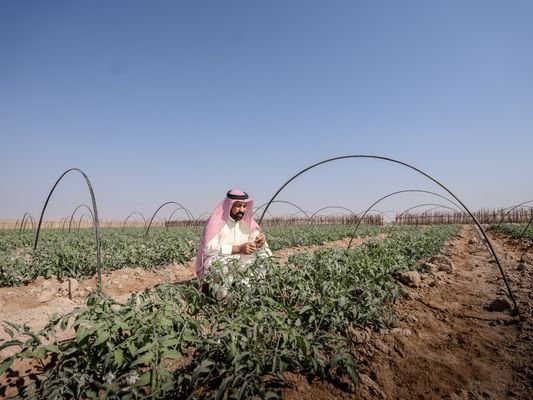Step-by-Step Due Diligence
Assess Due Diligence requirements and make a plan, triangulate information, monitor and refer HLP issues.
Preparedness & Planning
Objective: Assess HLP context, identify stakeholders, make a due diligence plan, and build awareness amongst project team about interlinkages between the project and HLP and with identified stakeholders on upcoming activities.


Before Implementation
Objective: Determine if the project has sufficient certainty that housing, land or property rights have been verified to implement project activities, all relevant stakeholders have been adequately informed and consulted, and project agreements, memorandum of understandings or no objections have been obtained.


Implementation
Objective: Monitor for signs of HLP issues arising, establish an HLP case management process, respond to and refer HLP cases.


Preparedness & Planning
Objective: Assess HLP context, identify stakeholders, make a due diligence plan, and build awareness amongst project team about interlinkages between the project and HLP and with identified stakeholders on upcoming activities.
Before Implementation
Objective: Determine if the project has sufficient certainty that housing, land or property rights have been verified to implement project activities, all relevant stakeholders have been adequately informed and consulted, and project agreements, memorandum of understandings or no objections have been obtained.
Implementation
Objective: Monitor for signs of HLP issues arising, establish an HLP case management process, respond to and refer HLP cases.
Preparedness & Planning
The project team should determine the appropriate level of community engagement by considering the availability of documentation, accessibility of community members, sensitivity of land issues, and whether the intervention is for emergency assistance or a durable solution.
Tip
- Begin recording possessions mentioned during conversations with stakeholders and gathering or identifying availability of any records. This can support validating information about HLP rights during pre-implementation.
- Identify what and if any permissions are needed for consultations. For example, in South Sudan, some areas require permission from the county commissioner for local-level consultations.
- Identify what and if any permissions are needed for consultations. For example, in South Sudan, some areas require permission from the county commissioner for local-level consultations.
National Bodies
This includes national-level land governing bodies and policymakers.
State & Local Bodies
This includes land ministries and local government staff. It also includes municipal land councils, local authorities and courts.
International Community
In this category, we find humanitarian actors, technical working groups, relevant clusters and development actors.
Local Community
Here you can include community representatives (IDP and Host), traditional authorities, neighbors, marginalized community groups and legal support.
Identify
Identify priority stakeholders for consultation.
Inform
Inform the community about project activities and raise HLP awareness.
Map
Map how stakeholders interact and how this influences HLP rights and security of tenure.
Preparedness & Planning
A clear set of eligibility HLP criteria should be established and used as a baseline to check if all conditions to proceed with certainty have been met for the project to go forward. The criteria should be reflected in questions during the project recipient selection/verification process.
The following criteria should be adapted to the specific context. Generally, criteria should have different degrees of consideration depending on the severity of the HLP issue.
Yellow Flag
More information is needed about the situation and/or measures to mitigate the issue should be undertaken.
Orange Flag
The issue must be addressed, mitigated or resolved and referred for HLP support before proceeding.
No Go Flag
Any 3 means that the intervention cannot move forward in this community.
Preparedness & Planning
Before any activities can begin, information obtained about ownership, tenure, and rights to allocate the land/property for project activities must be verified. This can occur through key informant interviews with displaced and resident community members, traditional and local authorities and other relevant stakeholders. Verification should occur through multiple sources of information, even when documentation is available.
Tip
- Document each step taken to verify information. This is especially important in contexts where there is little formal documentation.
- Key informant interviewees should include: long-term residents (minimum 3-5 years in the area), women, representatives from both resident and IDP communities, government authority representatives and representatives from different ethnic groups (if appropriate to the context)
Don’t forget about non-owners. Non-ownership does not mean an individual is ineligible for assistance. Types of non-owners could include:
- Renters
- People living in informal settlements
- People who live in their place of work
- Women without documented inheritance or marital status
Key Actions
Coordinate
Coordinate with government authorities, traditional leaders, and community representatives identified during stakeholder mapping to inform about community engagement activities. Find out if any community groups should be consulted separately or together to avoid causing any tensions.
Verify
Triangulate information received from different community groups, traditional and government authorities.
Confirm
Ensure that all stakeholders are informed and agree to (boundaries/project area, project details, indented duration of project, any non-residential land uses needed (access to water, ect.)
Preparedness & Planning
Awareness-building and information sharing with communities and local authorities is a key component of the due diligence process. These efforts build trust, manage expectations, and reduce misunderstandings, contributing to more successful and sustainable outcomes. This is also an opportunity for building awareness about HLP rights.
Tip
- Include M&E in awareness building/training sessions, such as pre-training assessments on HLP awareness and post-training assessments, this will help during evaluation to assess if the knowledge was applied.
- Inform and overcommunicate to local stakeholders about the project as early as possible. This important for individuals who have lost documentation to seek support.
Generally awareness building should focus on the following:
Type & duration of project activities
Eligibility criteria & selection process
HLP rights & available support
Key actions
Develop a Community Engagement Plan
- that is inclusive and can be sustained for each phase of the project cycle.
- Ask community leaders and members what they think effective community engagement looks like.
- Build on existing local structures, systems and resources to promote community ownership.
- Develop mechanisms and processes for timely dissemination of project details, awareness of HLP awareness workshops/training and incorporating community feedback into project design and implementation.
Ensure necessary government stakeholders are notified
- of project details, community engagement activities, workshops and that an agenda and program details of such activities are shared in advance.
Explain why information is being gathered
- to the community and stakeholders, including the reason for any survey, assessment or data collection, how the information will inform the project. This will help build trust, acceptance and avoid misinformation.
Before Implementation
The local HLP context is one of the most determining factors for achieving successful project outcomes. This involves understanding the types of tenure arrangements, access to land ownership or use documentation, HLP-related disputes or risks and who has rightful authority to allocate the land or property for the project.
The plot-level assessment focuses on identifying owners or rights holders to specific plots of land, natural hazard or other risks, disputes over boundaries, presence and availability of natural resources and any other factors related to the land or property that could impact the project. The HLP Assessment will typically begin with the plot or property level assessment.
Factors to consider for the HLP assessment generally fall under four main categories:
Ownership/Rights Holders
Who are the rightful owners, right holders or occupants. If there are are claimants to land or property allocated by the government. What kinds of ownership or use rights documentation individuals and communities have (if any).
Tenure Context
What tenure arrangements exist, what are the levels of tenure security and mechanisms to strengthen tenure security.
Land Governance & Regulatory Framework
This includes, formally recognized tenure types and if there are land allocation policies for IDPs. It also includes requirements of obtaining documentation and land dispute resolution mechanisms. Lastly, community development and land use plans.
Before Implementation
Written agreements, such as Memoranda of Understanding (MoUs) and project implementation agreements, should be signed by all parties involved before initiating activities. Whenever possible, no-objection letters from resident communities and/or local authorities should also be secured. These agreements should clearly outline the benefits, roles, responsibilities, and legal steps in case of breaches, with translated copies provided to relevant stakeholders. Additionally, it should be determined whether alternative forms of agreements, such as recorded verbal agreements, might be more appropriate or preferred in certain contexts.
Tip
- If written agreements are not possible/recognized obtain clear verbal confirmation (ideally recorded) from local authorities and community representatives. This is only if written agreements are not possible, to meet literacy requirements or as a backup to a written agreement if there is any doubt that written agreements are recognized.
Key Agreement Components
At a minimum, the shelter agreement should include the following:
- Identity proof for all parties to the agreement.
- Names of family members residing in the shelter.
- Written permission to conduct specific shelter activities from owner and tenant.
- Location, identification code and boundaries of the property (property map/photo, geo-coordinates, neighbors plot coordinates, satellite imagery boundaries and map).
- Verification of property ownership documents and information.
- Roles and responsibilities of each signed party.
- Acknowledgement of mutual understanding of project entitlements, duration, provisions and limitations, including that the shelter project does not confer ownership rights.
- Clear process for resolution in case of breach that is adapted to local context.
- Conditions and process for termination of agreement.
- Disclaimer that agreement does not confer ownership.
Before Implementation
Develop a plan to address HLP issues before implementation to enable a timely and effective response during the project. This plan should include ensuring the project team has HLP expertise or access to support, establishing a clear process for referring cases, and building awareness of potential HLP issues, including how to recognize and address them appropriately.
Tip
- When possible, involve local authorities and other specialists, such as enumerators on HLP trainings. This can support HLP capacity building in the longer term.
Key Actions
Assign HLP Focal Points
Assign member(s) on your team to lead on identifying and referring HLP issues.
Build Capacity
Train or provide support to HLP focal points to increase awareness and capacity for identifying, addressing and referring HLP issues.
Identify HLP Support
Identify and connect with HLP actors that can provide specialized technical or legal support or train focal points to build capacity.
Implementation
The implementation phase should focus on monitoring potential issues and responding quickly and effectively. This requires establishing a case management process and ensuring community members are aware of reporting lines and HLP focal points are prepared to intake and address or refer issues.
Tip
- Ensure focal points on project team include women and staff experienced working with other vulnerable populations. Community-nominated focal points should also include women and representatives of vulnerable groups.
- (If Possible) Conduct a social cohesion assessment soon after implementation begins to make sure community conflicts are not arising. This could involve asking resident, IDP and surrounding community members about social relations and observing for signs of social integration or isolation.
- Systematically document HLP issues and steps taken to address them (even if unsuccessful) to contribute to shared learnings.
Establish Case Management Process
Who are the rightful owners, right holders or occupants. If there are are claimants to land or property allocated by the government. What kinds of ownership or use rights documentation individuals and communities have (if any).
Set up Reporting Lines
Ask community members about preferred methods for 2-way communication. Ensure reporting lines are community-specific, confidential, accessible and inclusive. Identify reporting requirements for different populations and ensure there are non-written and other forms of reporting if needed.
Identify Red Flags
Make sure focal points are aware of “signs” of potential HLP issues (i.e. requests to change terms of project agreement, reports of occupancy tax payments).
Community Check-ins
Routinely update communities/individuals on the status of HLP issue referral cases, how cases are being managed, what actions are being taken, and how this will impact them. This is important for transparency, accountability and to encourage communities to continue sharing information.
